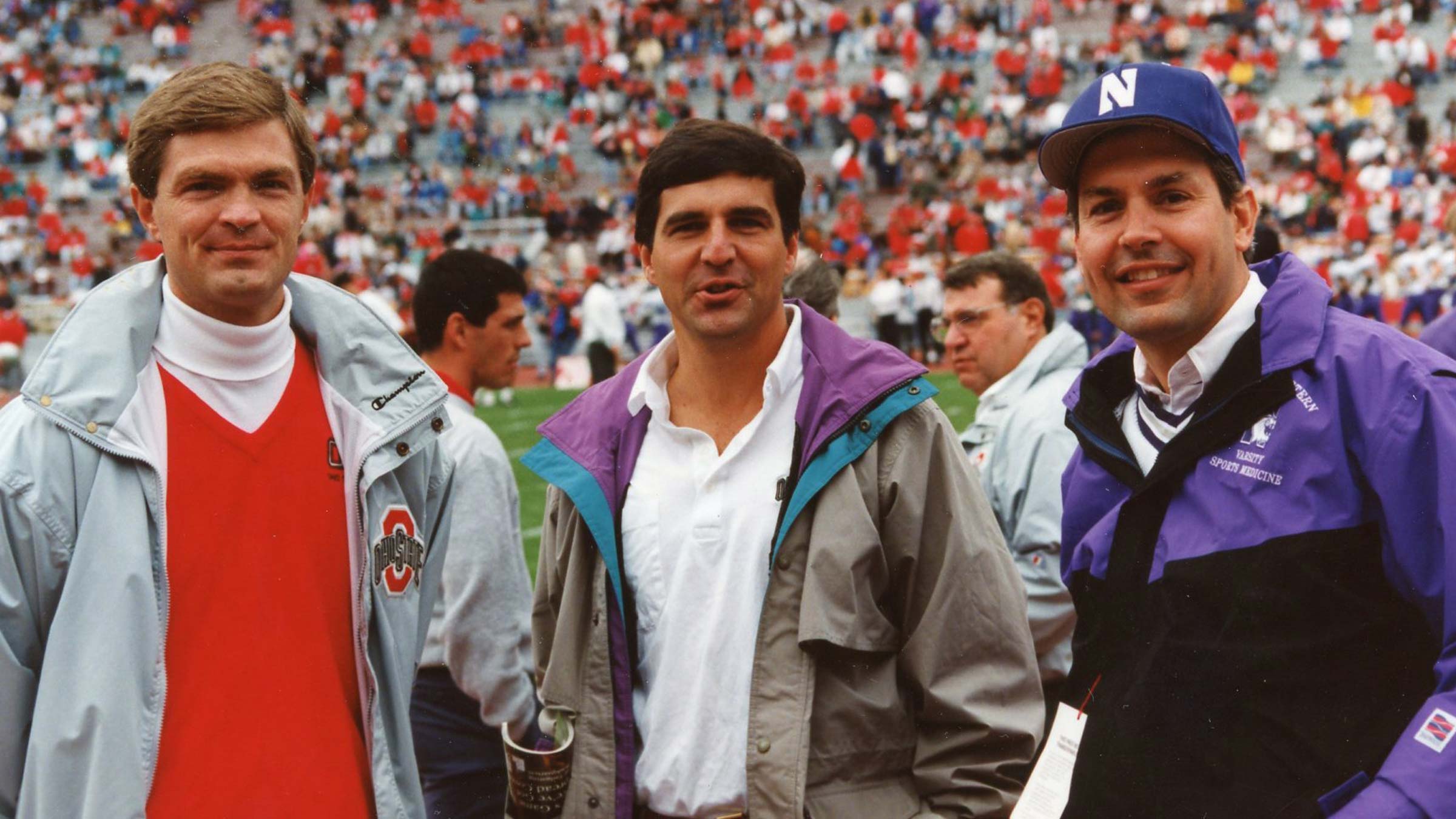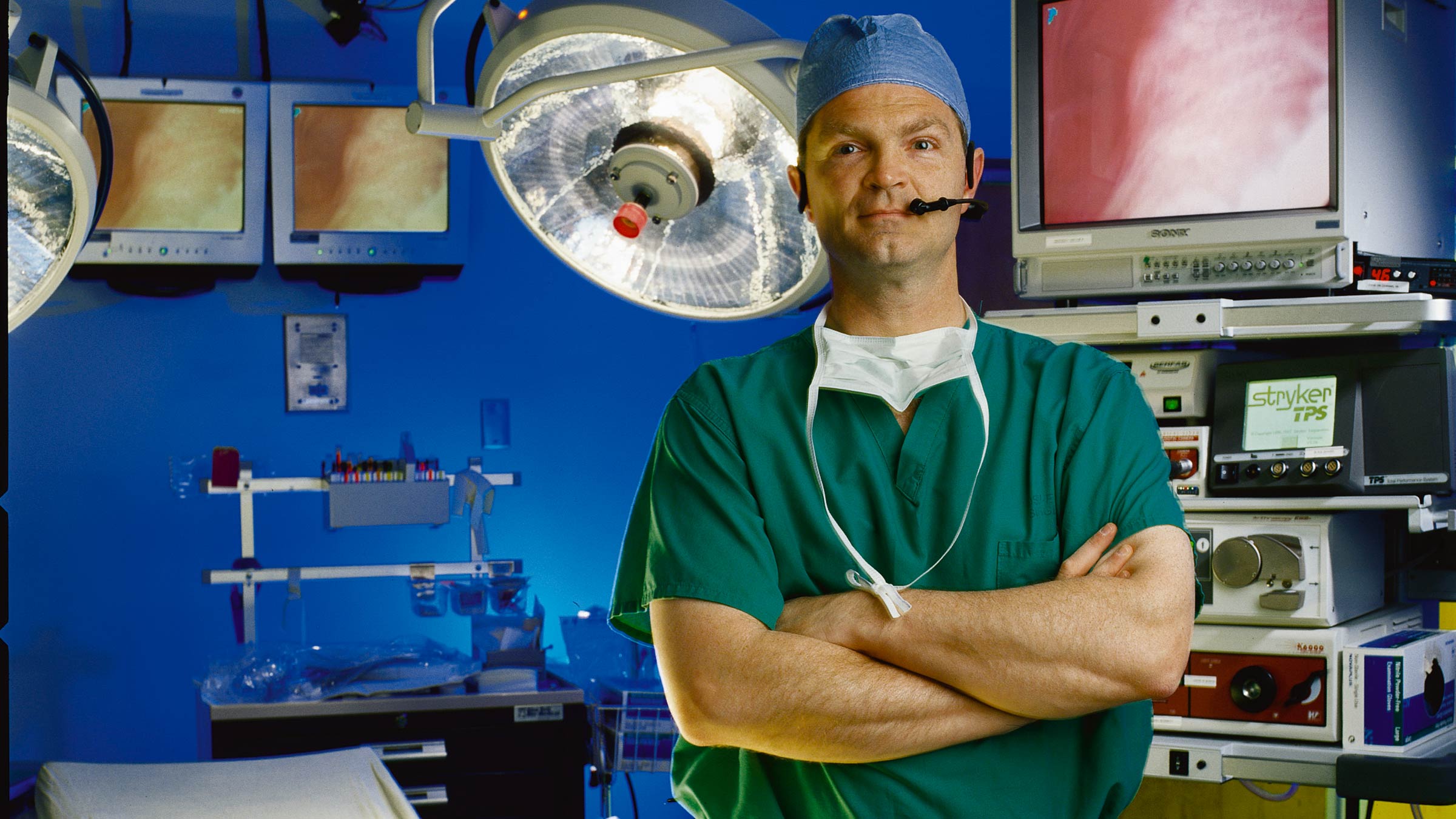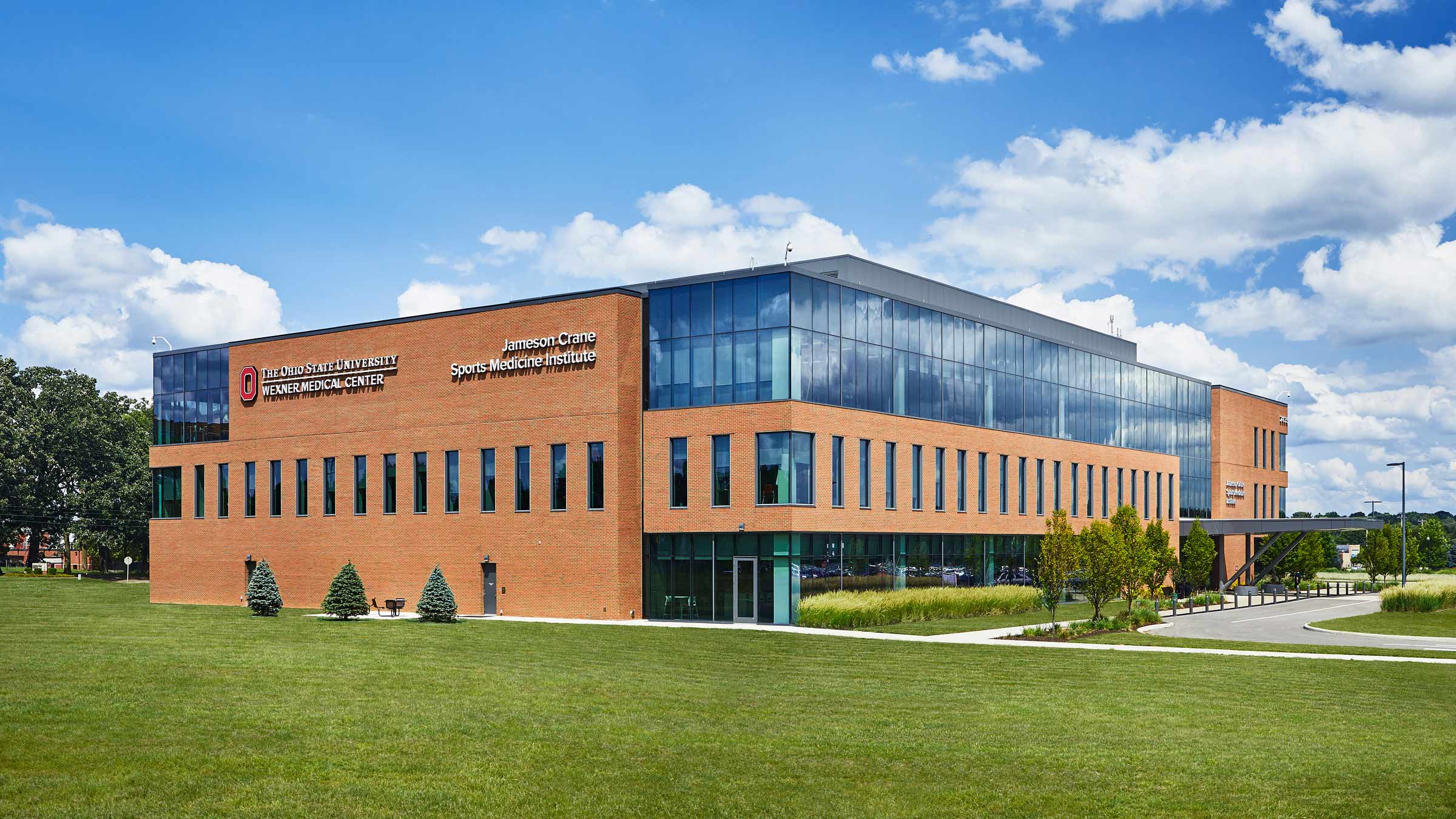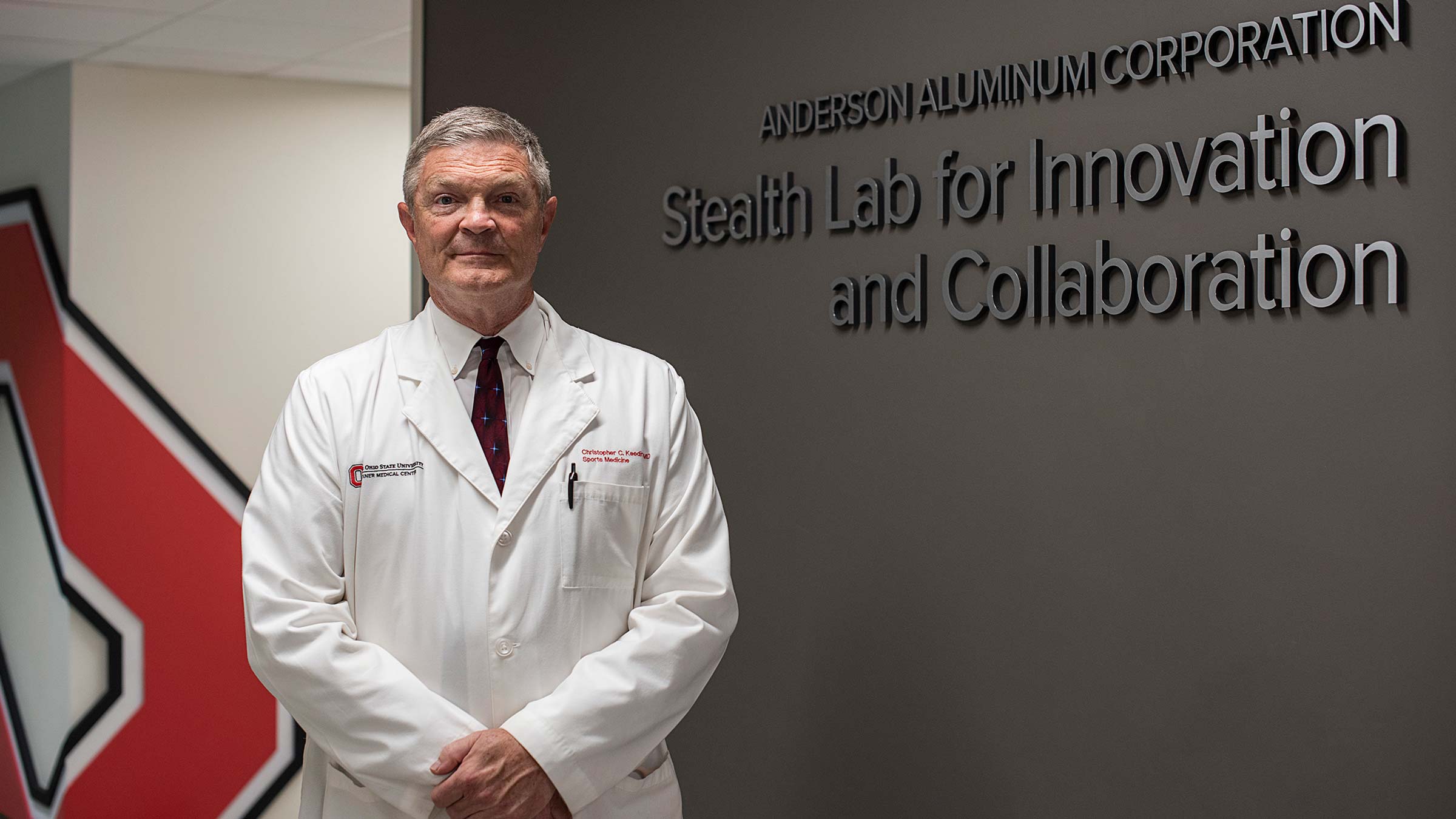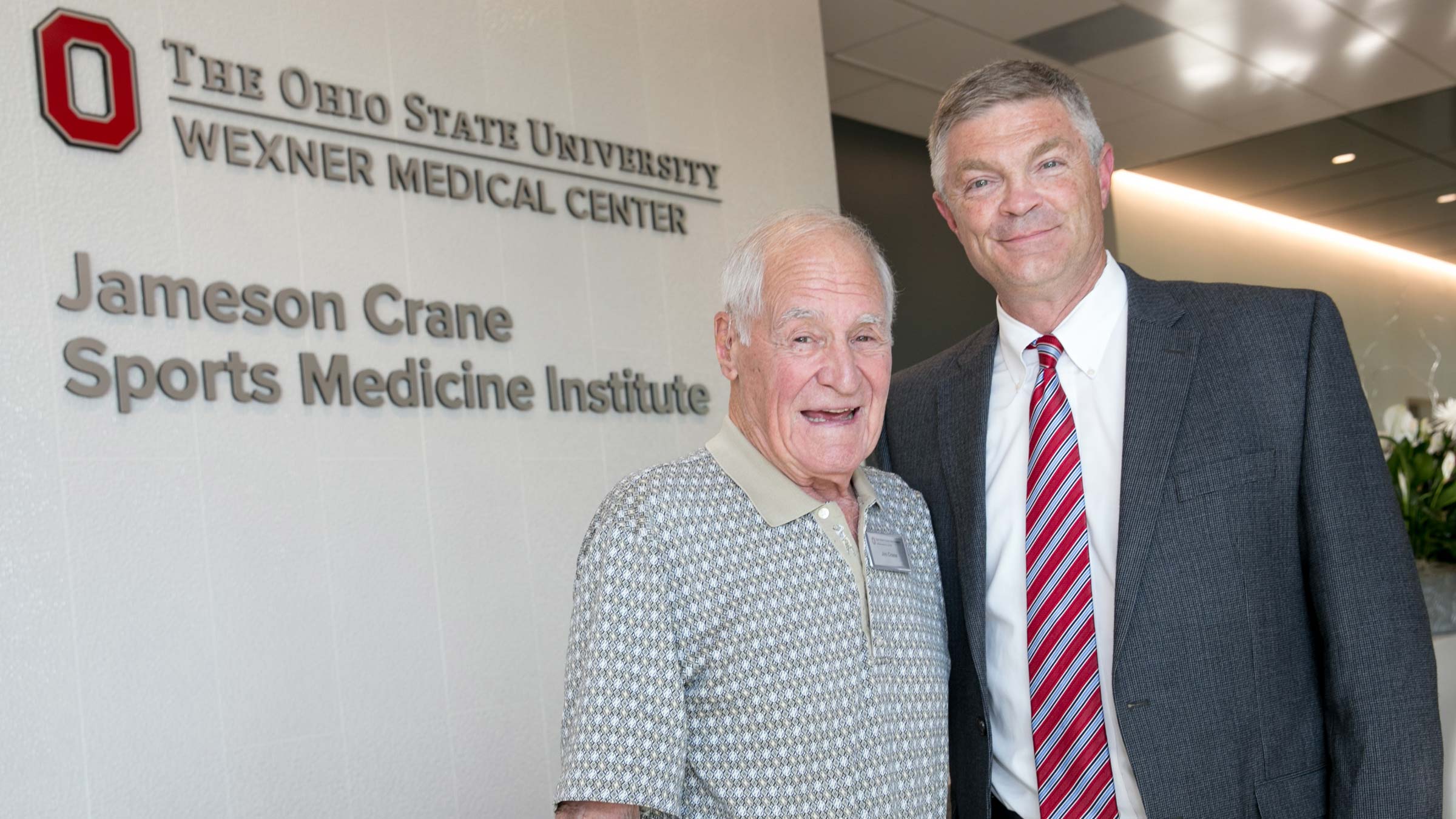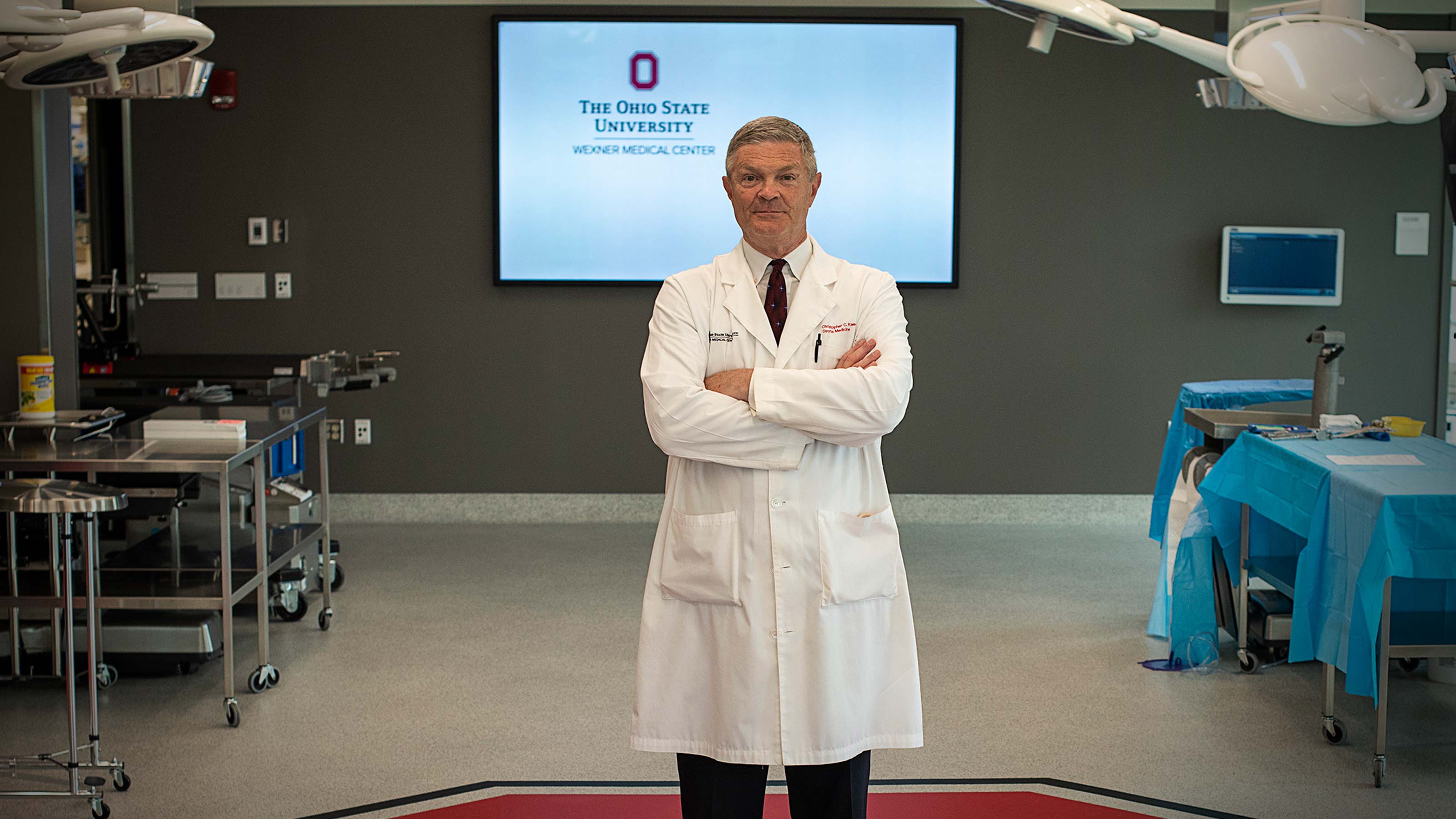Playing to win: How Christopher Kaeding, MD, is changing sports medicine
A lifetime of lessons learned on the field with elite athletes translate into revolutionary approaches for improving mobility, relieving pain and keeping everyone active.
For 30 years, Christopher Kaeding, MD, has been a fixture at almost every Ohio State University football game.
He isn’t a typical scarlet-and-gray spectator. The orthopedist is part of a specialized team that watches the action from the sidelines, whether on the road or in Ohio Stadium, ready to quickly intervene if an injury occurs during play.
“That’s almost 400 Ohio State football games; I think I’ve missed three of them,” says Dr. Kaeding.
Dr. Kaeding joined the Ohio State faculty in 1991 and has served as the lead orthopedic physician for the football team since 1992. “I’ve always been a sports fan. This was a way to dovetail it with my professional career.”
While he is passionate about helping elite athletes perform at the highest level, his medical practice and research extend far beyond the football field.
More than three decades into his career, Dr. Kaeding still has plenty of new moves in his game plan — including launching a revolutionary, multidisciplinary, team-oriented sports medicine facility at The Ohio State University Wexner Medical Center and pioneering in the United States the use of an orthopedic implant designed to slow arthritis progression and help people avoid knee replacement surgery.
Each innovation has the same goal: Help people stay in the game.
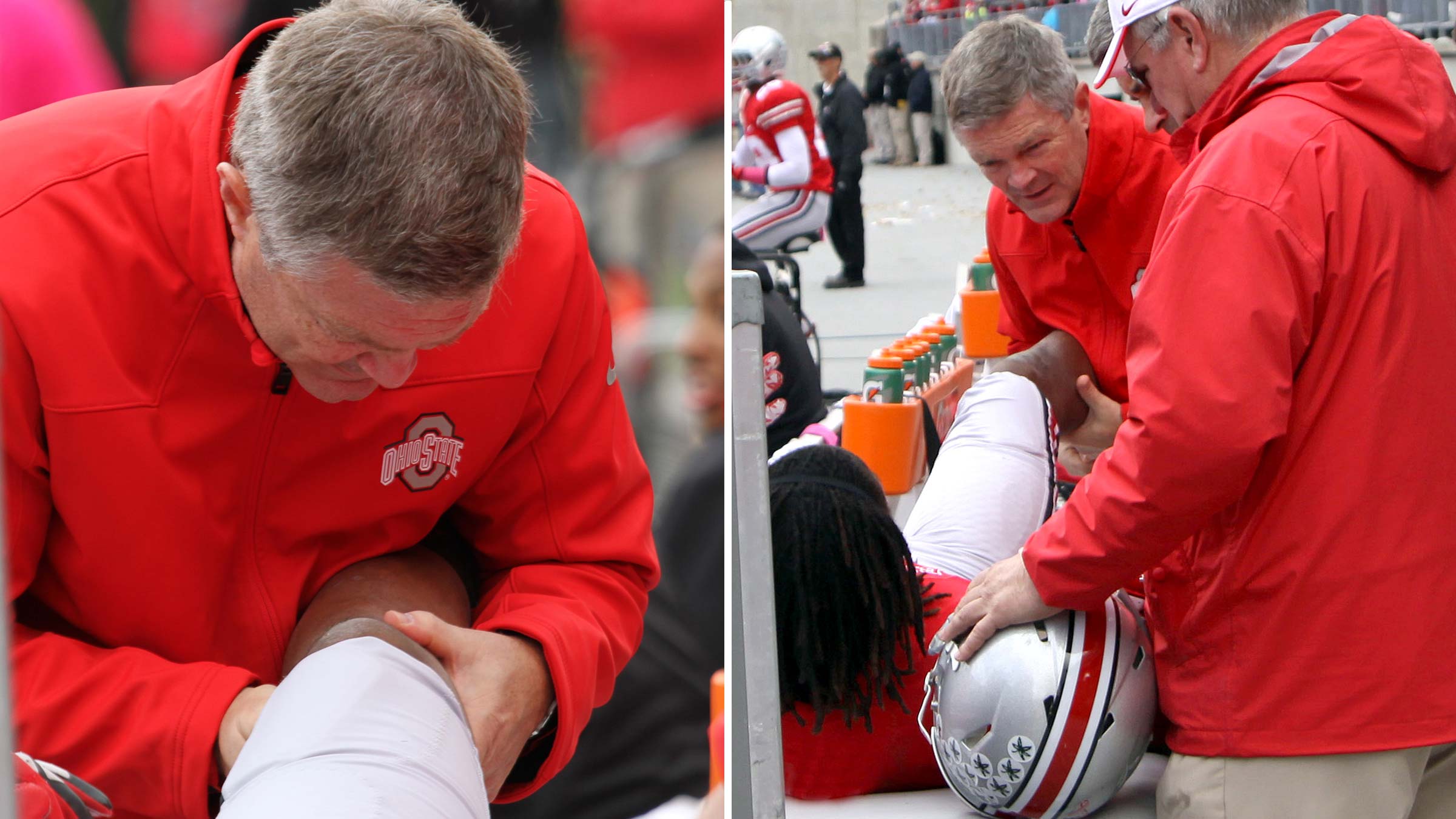
Dr. Kaeding, the Judson Wilson Professor in the Department of Orthopaedics at The Ohio State College of Medicine, takes pride in helping diverse competitors — from elite athletes to amateur triathletes, from weekend warriors to older adults seeking to regain the mobility to enjoy the recreational pursuits they once loved — perform at their best.
“Sports medicine is for everyone,” Dr. Kaeding says. “We know it can help people stay active, which helps them to enjoy their life and enhance their health. The benefit of staying active is so important, especially as you age.”
From childhood sports fan to Ohio State team doctor
He grew up watching sports and remembers looking up to star athletes featured on Wheaties boxes at the breakfast table. As a young boy, he was a St. Louis Cardinals fan and as a young adult he supported the Chicago Bulls, Cubs and Bears. Dr. Kaeding, who ran cross country and played basketball in his youth, didn’t envision a long-term athletics career.
He entered medical school with plans to become a pediatrician. It was a rotation in surgery, however, that most closely reflected his extracurricular interests: an all-star lineup, working together under pressure against the clock, to help patients overcome their health challenges.
“I have a goal-oriented personality,” Dr. Kaeding says. “At the time, a lot of internal medicine was about managing problems. In surgery, you fix problems. And the orthopedists really seemed to love what they were doing — very busy and fixing things that were broken.”
It’s no surprise, then, that sports medicine, one of the eight subspecialities in orthopedics, is what he ultimately chose. Dr. Kaeding then accepted a fellowship at Cleveland Clinic, where he was mentored by longtime Cleveland Browns team doctor Dr. John Bergfeld. Dr. Kaeding went on to specialize in knee and ligament surgery.
When Dr. Kaeding arrived at Ohio State in 1991, the university was outsourcing the role of head physician. The university’s first dedicated sports medicine program would launch that same year.
The Ohio State Sports Medicine Center opened in March 1991 and was originally housed in the primary care network. The program went through a transition in 2004 and Dr. Kaeding was asked to lead the Sports Medicine program. Housing a program with such a broad footprint in a single department at a large, diverse university such as Ohio State didn't seem appropriate.
“That’s a very antiquated organizational structure,” Dr. Kaeding says.
Today, places like the Ohio State Wexner Medical Center have sports medicine specialists in nutrition, psychology, exercise physiology, orthopedics, primary care medicine, athletic training, physical therapy and biomechanics, as well as others.
With that framework in mind, “we shouldn’t limit sports medicine to one department,” says Dr. Kaeding, who in 2004 was asked to reimagine how it could be delivered at the Ohio State Wexner Medical Center.
His vision: a forward-thinking space that delivers tailored, multidisciplinary collaborative care.
A team approach to sports medicine
Dr. Kaeding’s vision came to fruition when The Jameson Crane Sports Medicine Institute opened in 2016 in the heart of the university’s “sports” corridor, situated within walking distance of Ohio State’s athletics venues and training facilities. It remains one of the largest and most advanced dedicated academic sports medicine facilities in the country.
The 112,000-square-foot complex is unique because it integrates research, teaching, clinical care — including surgery — and performance training under one roof.
“We currently have 12 or 13 different disciplines practicing here,” Dr. Kaeding says. The ecosystem, he notes, is designed to provide a holistic experience that involves much more than achieving physical recovery.
When treated at the Jameson Crane Sports Medicine Institute, an athlete recovering from a serious injury might also meet with several nonoperative clinicians, such as a psychiatrist (“to help them deal with that anxiety of returning to sport,” Dr. Kaeding says), a sports nutritionist and a physical therapist.
Many of the institute’s staff have athletic backgrounds, so the conversations and care plans can be highly personalized and relevant to the patients.
“We take care of the BalletMet and the OSU School of Dance, and we have a couple of physical therapists here who used to be dancers,” Dr. Kaeding says. “We also have therapists who love resistance training and weights; they love working with the power lifters.
“You have someone who understands your jargon, your passions and the subtleties of what you’re trying to do.”
That shared understanding and passion at the Jameson Crane Sports Medicine Center extends to cyclists getting their bike properly fitted or distance runners getting a gait analysis, among other services.
“It’s truly a multidisciplinary center with unique and intertwined disciplines under one roof,” says Ohio State team physician David Flanigan, MD, who is also a professor of orthopedics and a 16-year colleague of Dr. Kaeding. “That’s because of Dr. Kaeding’s vision — he has been a tremendous leader in building a team of sports medicine experts to bring the best care to Columbus.”
Through research, the Crane Sports Medicine Institute advances innovations in sports medicine and the care of athletes of all ages and experience. Patients have access to participate in multiple clinical trials at any given time.
The institute also is home to the Motion Analysis and Performance Lab (a joint effort among engineers, athletic trainers, physical therapists, physicians and coaches to measure how athletes move) and the Surgical Skills Lab, a 5,000-square-foot space to evaluate the latest products, advance technical skills outside of the operating room and explore innovative new procedures in a controlled environment.
Taken together, the goal of this work is to serve patients of many ages and skill levels.
“It’s like the technology used to put a man on the moon is the same that was used to put a microwave in everyone’s kitchen,” Dr. Kaeding says.
Part of making Ohio State Sports Medicine one of the leading academic programs in the country is being on the leading edge of understanding current treatments and the development of new interventions.
Dr. Kaeding was a founding member of the MOON Knee Group’s ACL research consortium, arguably one of the most successful ACL reconstruction clinical outcomes research projects ever. It has produced over 60 peer-reviewed publications and won the prestigious Kappa Delta Award from the American Academy of Orthopaedic Surgeons.
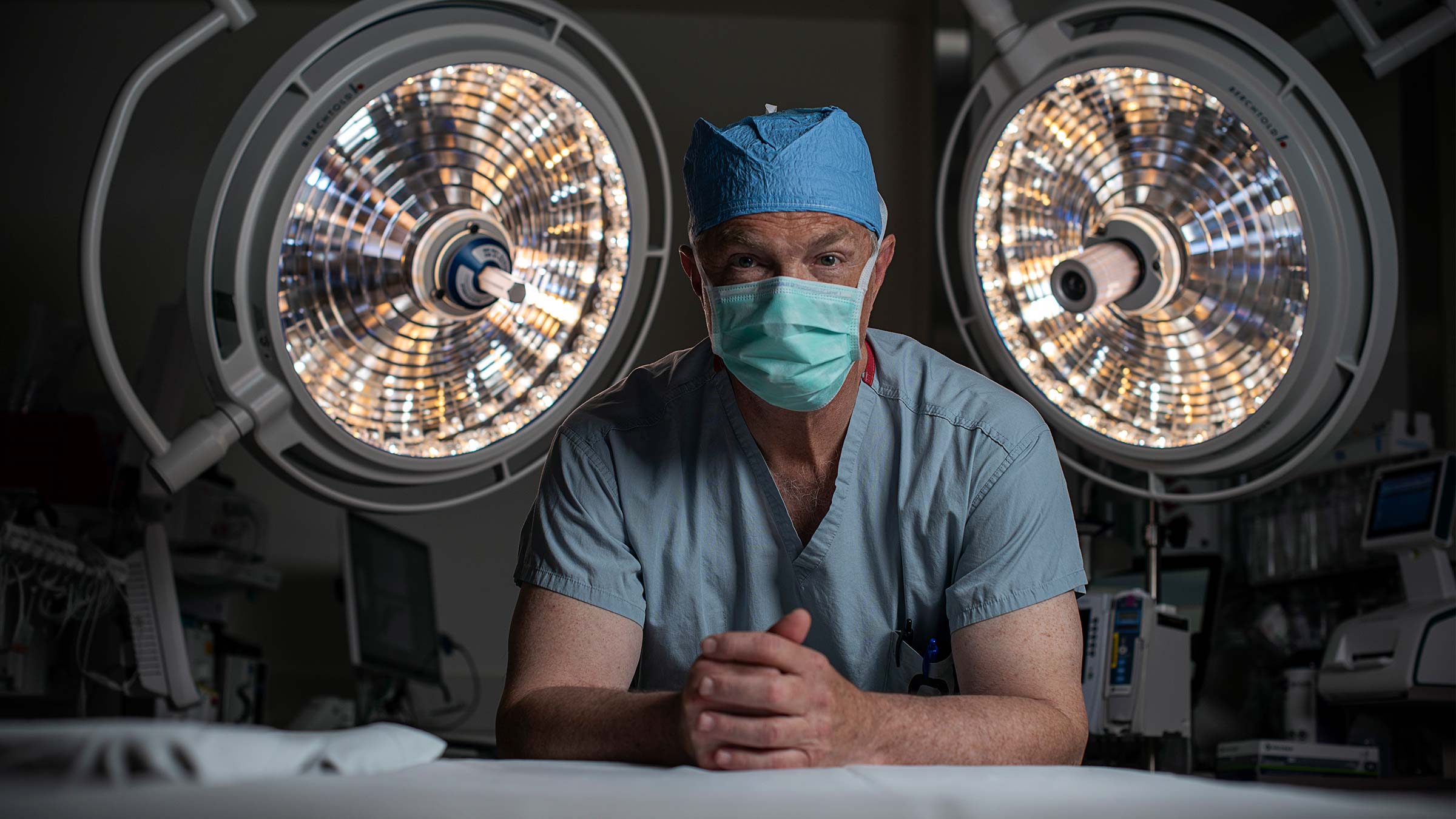
New artificial meniscus implant helps slow arthritis progress and avoid knee replacement
Helping patients resume their cherished activities has motivated another major interest for Dr. Kaeding in recent years: helping to develop the country’s first-ever artificial meniscus implant.
Ohio State Sports Medicine’s reputation led the start-up company Active Implants LLC to approach it about participating in a multicenter clinical trial. Dr. Kaeding was the first surgeon in North America to implant the device in 2015.
The device mimics functions of the meniscus — a fibrocartilage pad located between the thigh and shin bone that acts as a shock absorber. A torn meniscus typically won’t heal, which leaves an injured person prone to developing arthritis and facing knee replacement surgery.
It’s why the device could be a game-changer for many of the 3.5 million adults expected to need knee replacement surgery by 2030. Clinical trials for the device have closed and it is awaiting FDA approval, which still could be a few years away.
“I personally believe it will be transformative,” says Dr. Kaeding, adding that NUsurface® has been implanted in several hundred patients in the U.S. as part of the ongoing clinical trial. “Once the implant is in, you can start bearing weight on it that day. Patients have been very happy with the amount of pain relief and how quickly they recover.”
The pressure of performing the first such implant in the U.S. didn’t faze the surgeon.
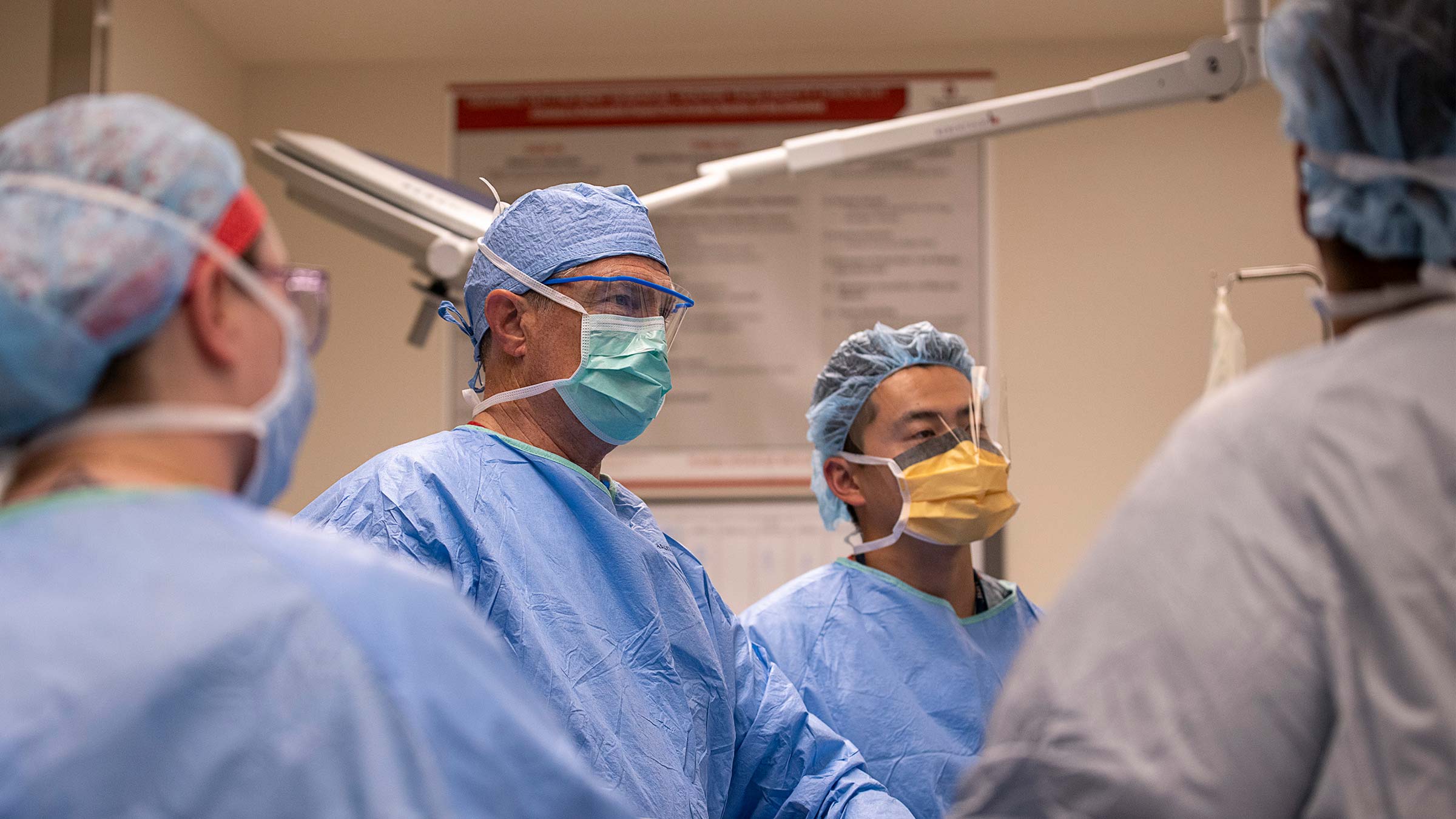
“I try to be very thoughtful about trying new techniques,” Dr. Kaeding says, noting that the NUsurface® implant (in use since 2008 in Europe) can break down over time but that replacement is minimally invasive. “I find it exciting, but also a little nerve-wracking. It’s like playing Michigan — but I enjoy the challenge.”
The results were a win for Drake Ross, the first U.S. recipient and a Columbus, Ohio, resident who was once active in running and martial arts. After several surgeries to trim his damaged meniscus, he was identified as a suitable candidate for the NUsurface® implant.
“After my first appointment with Dr. Kaeding, I was standing near the exit, contemplating what would be my first knee surgery. He somehow knew I was not thrilled and he said, ‘Drake, everything is going to be fine.’ I immediately felt comfortable and he delivered on his remark,” says Ross.
The potential to offer the surgery at Ohio State is a credit to Dr. Kaeding’s work and influence, his colleagues say.
“It’s a testament to his approach, always being able to bring the newest and the next best thing,” Dr. Flanigan says.

Legacy of safety, support and excellence in sports medicine
Despite his busy schedule, Dr. Kaeding still enjoys hitting the road during football season.
He doesn’t allow the game to overshadow his job.
“You have to be very careful to separate being a fan from being a physician, because you want to do what’s medically right and in the best interest of the athlete,” says Dr. Kaeding, adding that the team’s athletic trainers are the first ones to spring into action.
“Right after every play, you’re looking to see that everyone’s getting back up off the ground and how quickly.”
Although serious accidents are rare, the memories resonate. One that stays with Dr. Kaeding occurred on Sept. 23, 2000, when Penn State freshman cornerback Adam Taliaferro suffered a severe spinal cord injury after attempting to tackle a Buckeye running back in Ohio Stadium.
The collision, which snapped Taliaferro’s neck backward, left the athlete unable to move his arms or legs. He underwent spinal fusion surgery at Ohio State and was rehabilitated to gain mobility. Today, he’s a married father of two and a New Jersey politician.
A quick, coordinated care team made the difference.
“I’m very proud of how the system worked here, the timeline from when he had his injury to where he’d been immobilized and transported to the emergency room, had his CT scan and was seen by a neurosurgeon was 58 minutes,” Dr. Kaeding says. “Adam has said multiple times, if this had happened in Happy Valley, they would have had to fly him in a helicopter to Harrisburg.”
Overall, Dr. Kaeding says, the evolution of game play — especially football — has led to more coaches, trainers and participants focusing on ways to enjoy their sport more safely. But players also are training more intensely and without seasonal breaks, which tests the limits of their bodies.
“There’s always a price you pay for excellence,” Dr. Kaeding says. “The question is: How do you minimize that risk?”
Athletes, he knows, will always need strong preventive care to elevate their skills, to win the big game or simply to meet a personal fitness goal.
Those pursuits, large or small, continue to energize his work. “I want all of my patients to feel like they were treated by professionals who are on top of their game and who care about them so they can go back to the activities they love.”

Living with knee pain?
The knee specialists at Ohio State Sports Medicine can diagnose and treat your knee pain to get you back to your sport, or back to a pain-free life.
Expert care starts here


